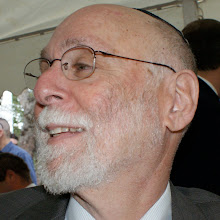In the course of working on piecing together our family tree, I came to the realization that a forum was needed to share (while there is still time!) memories and memorabilia with my own children and grandchildren, as well as with a very large field of cousins, most of whom I have yet to meet, and most of whose names I don't even know.
Twenty-first century technology now affords us extraordinary new means of sharing information around the globe in the blink of an eye, so it would would be inexcusable for me to keep to myself information which could help others of you to better understand the early history of our family in America. Publishing this blog seems the best way to reach to the widest circle, and it is my hope that each of you will help our "followers" list to grow by sharing Tuv Taam with other corners of the family that are known to you.
Over the next weeks and months I shall be adding photos, articles, and anectodotes about our ancestors, and I hope that many of you will take advantage of adding your own comments to the mix.

 Two large portraits of Aharon and his second wife were painted in oil from life and have passed down in the family through the generations. For many years they graced the home of Nathan and Sadie Friedman, my grandparents. From my earliest childhood memories, my parents, Robert and Edith Friedman displayed them in their homes; and for the past three decades they have been in the possession of my late sister, Rachel, and her husband Michael Albert.
Two large portraits of Aharon and his second wife were painted in oil from life and have passed down in the family through the generations. For many years they graced the home of Nathan and Sadie Friedman, my grandparents. From my earliest childhood memories, my parents, Robert and Edith Friedman displayed them in their homes; and for the past three decades they have been in the possession of my late sister, Rachel, and her husband Michael Albert.